Contents
The mildest peppers such as sweet bell peppers and cherry peppers are at the bottom of the Scoville scale. In the middle are peppers like Serrano, yellow hot wax peppers, and red cayenne peppers. At the hottest end of the heat scale are the Habanero and the Scotch Bonnet.
Several factors account for peppers’ heat. First, of course, is the type of pepper you’re dealing with and, beyond that, whether the particular strain of that pepper has been bred for maximum or minimum heat. The next factor is whether you remove the seeds and fleshy internal ribs of the pepper, where most of the heat resides. Finally, heat depends on when the pepper was harvested. Peppers that are harvested while still green have less heat, while those harvested when they have begun to ripen to red, orange or golden are hotter. Hotter still are peppers that have been left to fully ripen on the vine.
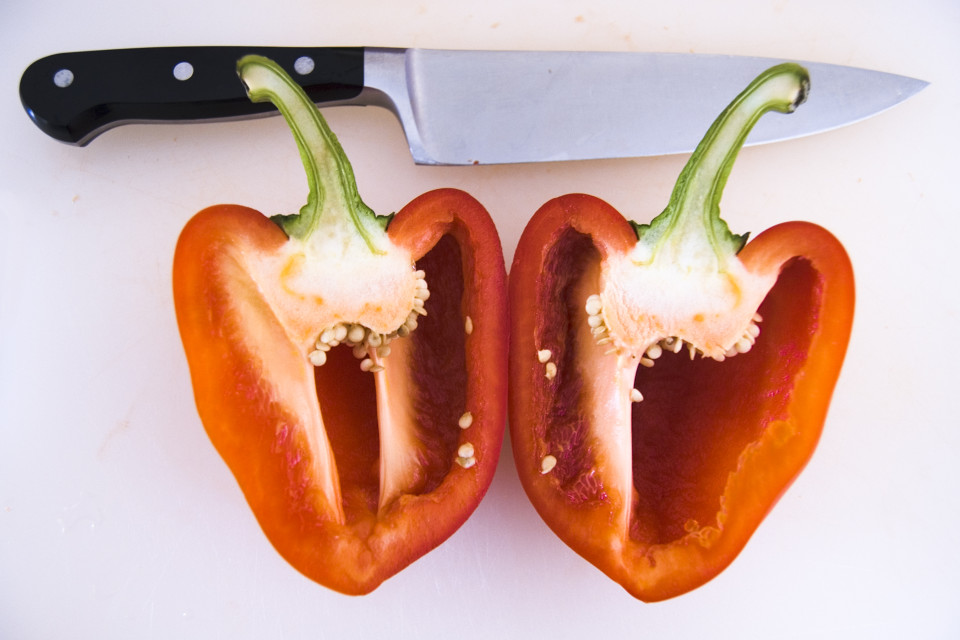
A few peppers, like the sweet bell peppers we’re all familiar with or the pimentos we find in green olives, will never be hot. Most peppers, however, provide a kick of warmth ranging from mild to volcanic. And how are unsuspecting pepper-lovers to know what they’re about to bite into?
A century ago, pharmacist Wilbur Scoville designed a heat-scoring test for peppers that’s still in use today. While an individual pepper can taste milder or hotter than its score due to other variables, and taste sensitivity can vary from person to person, the Scoville scale is a good guide to picking packs of peppers.
Sweet bell peppers, in shades of red, green, orange and yellow, are the most commonly sold peppers in America. Their crisp, sweet flesh is perfect for salads, sandwiches, and dipping.
Scoville Rating: 0
Pepperoncini have a light green skin and are usually sold pickled. They are also known as Tuscan peppers or sweet Italian peppers.
Scoville Rating: 100 – 600
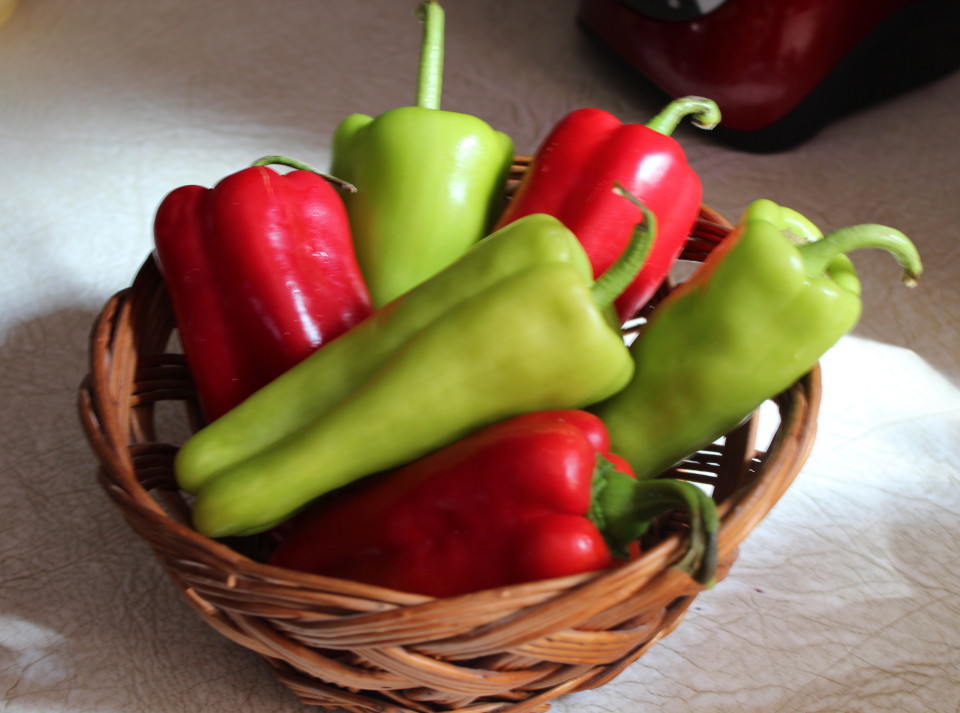
Photo Credit: Delicious on a Dollar
Cubanelle peppers, better known as Italian frying peppers, are very mild and perfect for sautéing. If you’ve eaten a sausage and pepper sub, you’ve eaten Cubanelles.
Scoville Rating: 100 – 1,000
Banana peppers, which range from yellow to ripening red, are generally mild enough to eat raw. Like sweet bell peppers, they are popular in salads, on sandwiches, and on pizza.
Scoville Rating: 500
Anaheim peppers, also known as California green chiles, are dagger-shaped hand-length peppers with a tough, light green skin. They are mostly served cooked and are especially popular for making chiles rellenos. When fully ripened, this pepper is known as the California red chile.
Scoville Rating: 500 – 1,000
Poblano peppers are finger-length with smooth, dark green skin. Their thick-fleshed walls make them perfect for roasting and stuffing.
Scoville Rating: 1,000 – 2,000
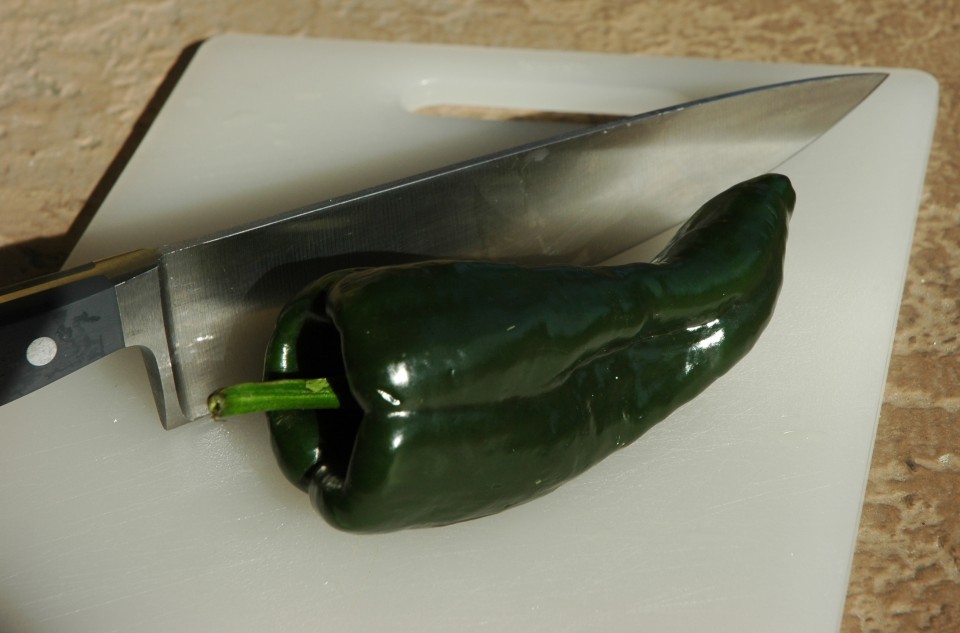
Ancho peppers are poblanos that have been allowed to ripen to red, then harvested and dried. They are the backbone of many sauces, including mole.
Scoville Rating: 1,000 – 2,000
Jalapeño peppers are the world’s most popular pepper, used in everything from salsa to poppers to chili. Though most often harvested green, red jalapeños are also seen in stores. The number of carefully-bred varieties of this little giant accounts for an unusually wide range of heat levels.
Scoville Rating: 2,500 – 8,000
Chipotle is the name given to any variety of jalapeño that has been ripened to red, dried, and smoked. Chipotles are chiefly used as an ingredient in other dishes, and if you’re cooking with them, remember – a chipotle pepper weighs only one-tenth as much as a jalapeño, but packs the same heat, so go by count, not weight.
Scoville Rating: 5,000 – 10,000
Hot wax peppers, also known as Hungarian wax peppers, have a yellow or pale green skin and can easily be mistaken for banana peppers, listed above. However, they’re exponentially hotter, so make sure you know which one you’re dealing with. Hot wax peppers are usually eaten fresh or pickled, and are used to season sauces, soups, and stews.
Scoville Rating: 5,000 – 15,000
Serrano peppers, with their smooth and gloss dark green skin, are a slightly smaller version of a jalapeño, and almost as popular. They are good roasted, and are most often used in sauces, salsas, and as a garnish.
Scoville Rating: 6,000 – 23,000
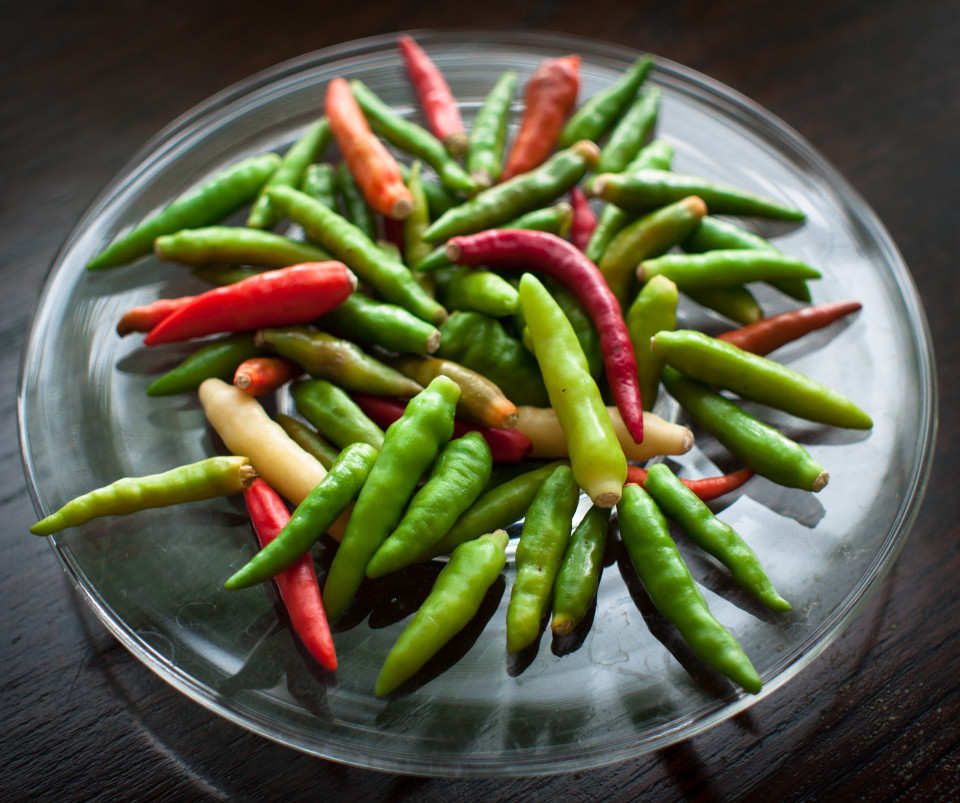
Bahamian peppers, about an inch long, are shaped somewhat like old-fashioned Christmas tree lights. They can be harvested when unripe and green or fully ripe and bright red, and also come shades of orange and bright yellow. Unlike most peppers, which hang from their stems, Bahamian peppers grow in upright clusters, with their pointed tips in the air.
Scoville Rating: 95,000 – 110,000
Carolina Cayenne peppers, developed at Clemson University, they are resistant to a particular crop-destroying nematode. Long, thin, and bright red, the Carolina cayenne is related to – and closely resembles – the cayenne that’s dried and ground into spice. Be sure you know which kind of cayenne pepper you have, though, as a Carolina cayenne is more than twice as hot as a regular cayenne.
Scoville Rating: 100,000 – 125,000
Jamaican peppers are shaped somewhat like the Scotch bonnet, below, except that instead of wearing a Scottish tam, the Jamaican pepper wears a Hamburg-style hat with a crown and a brim. The varieties with the most heat are the hot red and yellow varieties, while another variety, that ranges from purple to chocolate brown, are a bit milder.
Scoville Rating: 100,000 – 200,000
Bird’s Eye peppers originated in Guyana, but are now widely grown across Africa, India, and Thailand. This can lead to a great deal of confusion, as what’s labeled a “Thai pepper” may be the hot bird’s eye or a milder pepper, while in Africa, the pepper also goes by the name of piri piri. The pepper’s name was inspired by its size – at just an inch or so in length, this pepper packs a lot of heat per square inch.
Scoville Rating: 100,000 – 225,000
Scotch bonnet peppers look like cherry tomatoes wearing over-sized tam o’shanters. At maturity, Scotch bonnets are yellow, orange, or bright red. They’re popular throughout the Caribbean, and flavor many marinades and jerk dishes.
Scoville Rating: 100,000 – 325,000
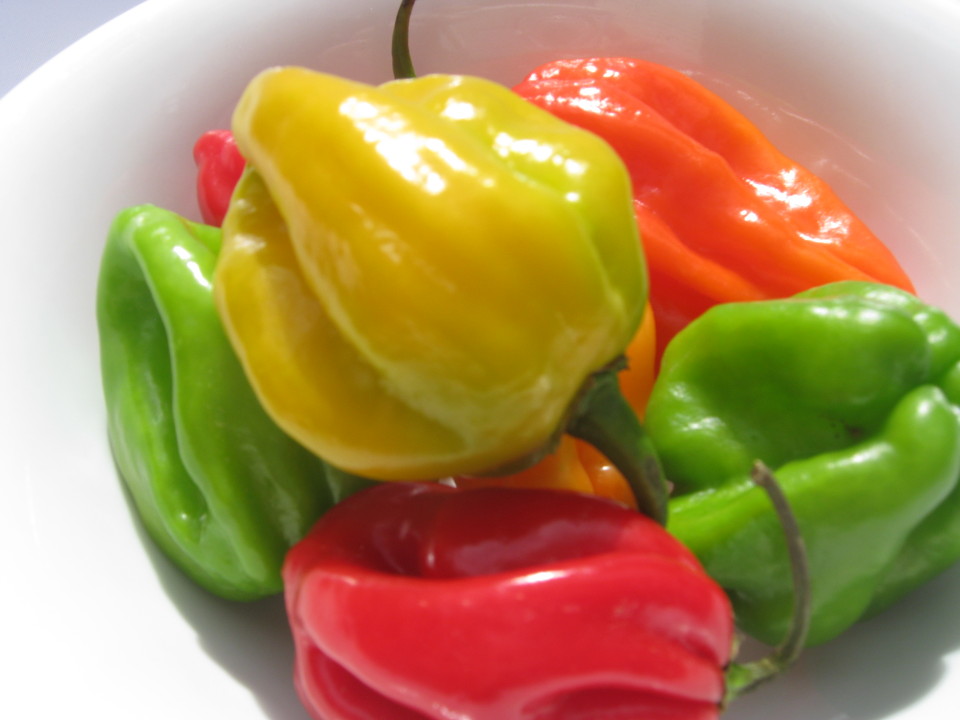
Photo Credit: Notes on the Menu
Habanero peppers are named for a city of Havana, which was once their chief trading port. Measuring from one to two inches in size, it resembles a small jalapeño or bell pepper that someone has pinched and left dents in. Colors range from light orange to deep orange to fiery red. Over the years, increasingly hotter strains of habaneros have been bred, and their Scoville rating was recently expanded from an upper limit of 350,000 to the eye-popping number below.
Scoville Rating: 80,000 – 600,000
Bhut Jolokia peppers, native to northeast India, are also grown in Pakistan and Sri Lanka. They are also known as ghost peppers because the name translates to “ghost cobra,” and the peppers are used in India to keep elephants from tramping through fields. The pepper is roughly the size and shape of a jalapeño, but with a thin skin that, when ripe and red, is noticeably wrinkled.
Twice as hot as the hottest habanero, the bhut jolokia is frequently listed as the world’s hottest pepper.
Scoville Rating: 1,000,000 and up
It happens to every pepper lover at one time or another – you take a bite and suddenly your eyes are watering, your mouth is on fire, and you’re breaking out in a sweat. Instead of reaching for a glass of ice water, have some slices of raw apple on hand. They’re a much better way to cool the flames than ice water.
I’m a full-time writer and food enthusiast. I love writing about food’s role in history and culture, and have found that cooking and fooling around in the kitchen is a perfect break from my work.
Give me a blizzardy day when I can make bread and soup and watch the snow pile up and I’m happy.
Fantastic article and super informative! Thanks for sharing, cheers!
Thanks, Nikki X!
You got it!
wow. i cant handle serrao and higher
Same!
Carolina reapers are much hotter than ghost peppers!